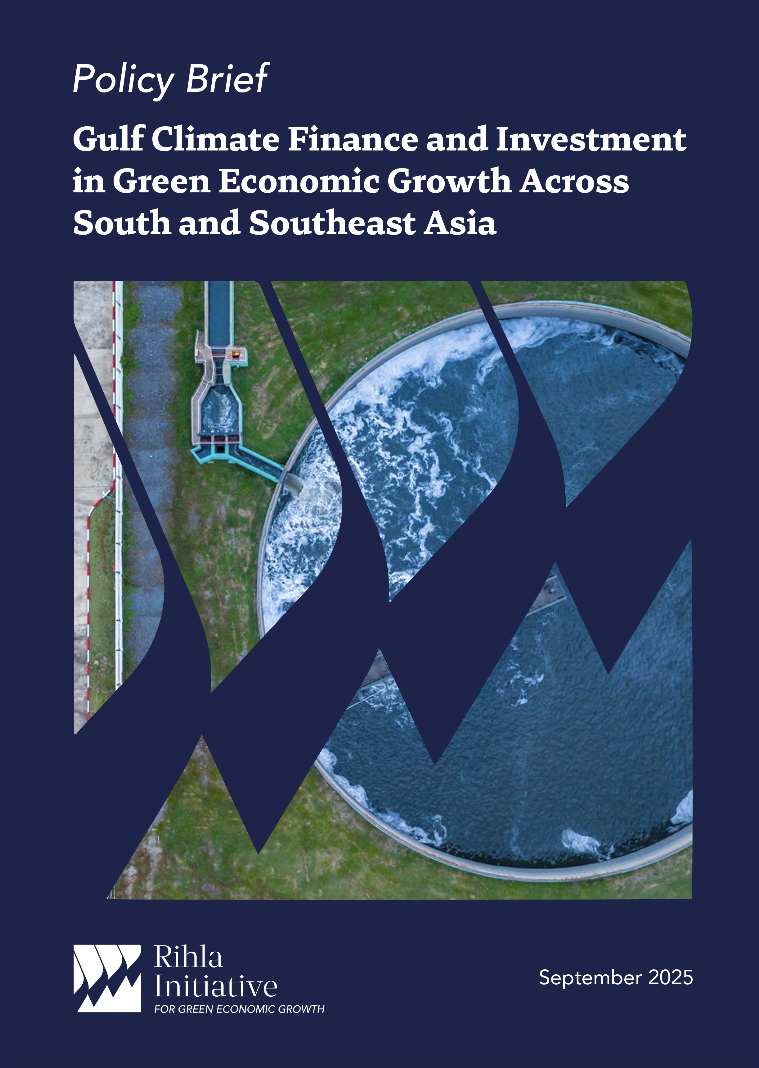Gulf Climate Finance and Investment in Green Economic Growth Across South and Southeast Asia
Executive Summary
Gulf investments in green economic growth across South and Southeast Asia (SSEA) are emerging as a critical driver for advancing regional sustainability, energy transition, and long-term economic resilience. At present, investments from Gulf Cooperation Council (GCC) members—Bahrain, Kuwait, Oman, Qatar, Saudi Arabia, and the United Arab Emirates—are concentrated in renewable energy, green infrastructure, industrial development, and energy transition technologies.
Much of this capital is channelled through sovereign wealth funds (SWFs), while diversified financial instruments, such as public-private partnerships, blended finance, sovereign loans, and Islamic financing models, are becoming increasingly important. Despite these developments, significant gaps remain in locally led climate adaptation. Sectors such as integrated water resources management, climate data infrastructure, and small-scale resilience projects often receive limited support, as investments tend to prioritise large-scale, high-return ventures.
South-South collaboration remains relatively nascent and requires careful navigation. SSEA countries have traditionally favoured funding from European nations and the United States, which are often perceived as offering higher-quality technology. For the GCC to position itself strategically, it must focus on non-mainstream green technologies where there is greater potential for leadership.Other potential investors in the region include Japan, China, Taiwan, and Australia, all of which maintain longstanding engagements across SSEA. Consequently, GCC investments should remain sensitive to existing projects, geopolitical dynamics, and partnerships with actors such as the European Union, China, Japan, and the United States.
Across SSEA, there is growing recognition of the Gulf not only as a financier but also as a strategic co-creator of resilient development ecosystems. This underscores the need for regional investment platforms and standardised assessment tools to level the playing field for smaller, more climate-vulnerable economies, as well as the importance of addressing chronic underinvestment in adaptation sectors, particularly water, agriculture, and coastal protection.
Drawing on existing literature, investment records, and expert consultation, this policy brief identifies three priority sectors for Gulf green investments in SSEA: renewable energy; water and agriculture; and infrastructure and industrialisation. The analysis reviews the current state of GCC investments in these areas, highlights opportunities and challenges shaping future engagement, and offers practical, timely recommendations for how GCC countries can strategically mobilise capital, partnerships, and policy frameworks to maximise impact while aligning with regional development goals and global climate commitments.
To achieve these aims, GCC funding must shift from extractive, top-down investment models to inclusive partnerships aligned with local development priorities and climate justice. Investment strategies should support national low-carbon development plans and net-zero commitments, while promoting technology transfer, blended finance mechanisms to de-risk adaptation projects, and the integration of social and environmental impact considerations alongside financial returns.
Principal Author: Dao Nguyen
September 2025

